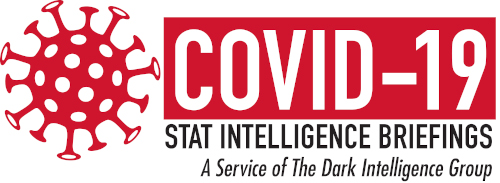New COVID-19 diagnostic testing technology not only offers near instantaneous results, but also opens the door to rapid results for a variety of clinical tests
A study recently published in the Journal of Vacuum Science and Technology B reveals new findings from a method of testing for COVID-19 that provides instant results. Researchers from the University of Florida collaborated with Taiwan’s National Chiao Tung University to develop this unique testing method.
The study’s lead author and a chemical engineering doctoral candidate, Minghan Xian, says that the research team developed this technology by building on previous research into testing for Zika, cerebral spinal fluid leaks, and heart attacks.
While traditional PCR testing requires copying the SARS-CoV-2 viral RNA multiple times and takes several hours, this new testing method uses a different approach. Researchers used biomarkers that bind to the virus when it is present. This binding creates a series of chemical reactions that ultimately results in an electrical signal that can be detected by an analyzer. This entire process is almost instantaneous, providing results in as quickly as one second.
How It Works, How It Could Help
“This could alleviate slow COVID-19 testing turnaround time issues,” Xian said in a recent interview. “Our sensor system, a circuit board, uses a transistor to amplify the electrical signal, which then gets converted into a number on the screen. The magnitude of this number depends on the concentration of antigen, the viral protein, present within our test solution.”
This new COVID-19 diagnostic testing technology has many implications outside of exclusively testing for the presence of COVID-19 and may allow for the rapid testing of many other infectious diseases and important biomarkers.
“By altering the type of antibodies attached to the gold surface, we can repurpose the system to detect other diseases,” Xian said. “The system can serve as a prototype for modularized, inexpensive protein biomarker sensors for expedient real-time feedback within clinical applications, operating rooms, or home use.”
Potential for Rapid Bedside Diagnostics
One of the important advantages of this COVID-19 diagnostic testing technology is that it is portable, allowing for potential home use and making it easier to implement into a clinical laboratory’s workspace. There may be potential that this test could be used at the point of care, enabling rapid bedside diagnostics in clinical settings.
The test is also likely to be quite cost effective, as the main circuit board used to analyze for the presence of a signal is completely reusable, reducing the overall cost of testing significantly. The availability of a portable, low-cost, almost instantaneous test for COVID-19 would be a significant development in the field of COVID-19 diagnostic testing. Additionally, this technology may have wider implications if it can be repurposed to test for a variety of clinical biomarkers, as researchers believe is possible.
The development of this technology illustrates how research into COVID-19 testing has resulted in advances that may be applied to other areas of healthcare and may have implications for other disease processes. The high volume of COVID-19 research initiatives has resulted in a wealth of knowledge about its disease process and clinical implications in a short period of time. Many aspects of this plethora of research may be applied to other areas of medicine, resulting in new testing and treatment capabilities for other conditions.
While this new COVID-19 diagnostic testing technology represents an exciting development, the research findings into this novel approach to COVID-19 testing is only beginning to emerge. The actual availability of the technology in a clinical setting could still be several months away as the technology continues to be researched, commercialized, and authorized for clinical use. The technology does, however, bear watching due to the significant impact that it could have in clinical testing.

—By Caleb Williams, Editor, STAT Intelligence Briefings
Related Resources:
Journal of Vacuum Science and Technology B: Fast SARS-CoV-2 virus detection using disposable cartridge strips and a semiconductor-based biosensor platform






